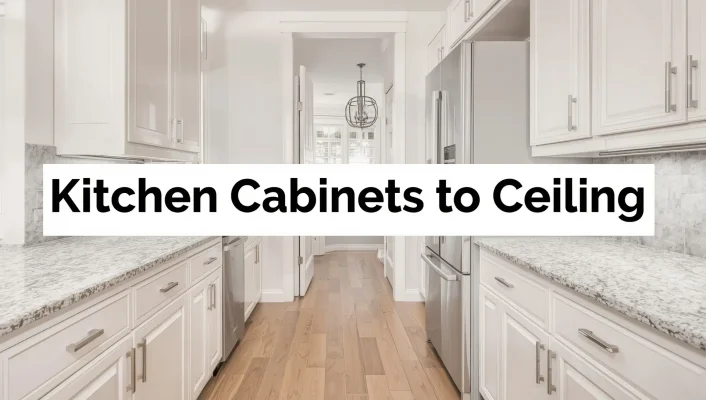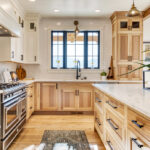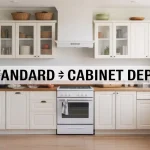Designing a modern kitchen is about combining function with style. One design trend that has gained popularity among homeowners and designers alike is extending kitchen cabinets to ceiling height. This approach not only maximizes storage but also creates a sleek, finished look that makes any kitchen feel elegant and cohesive.
According to the National Kitchen & Bath Association (NKBA), nearly 65% of kitchen remodels in the last five years included full-height cabinetry. This shows how much homeowners value the blend of practicality and sophistication that comes with this design choice.
In this guide, we’ll explore the benefits, styles, costs, and smart tips for incorporating kitchen cabinets to ceiling height cabinets into your kitchen design.
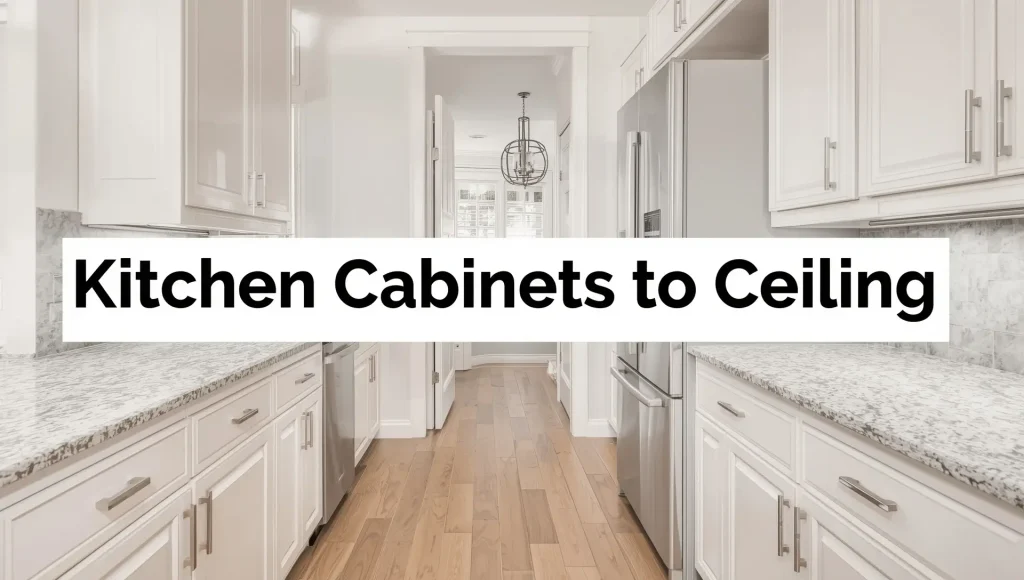
Content
Why Choose Cabinets That Reach the Ceiling?
Installing cabinets up to the ceiling transforms both the appearance and functionality of your kitchen. Here are some reasons why it’s a smart choice:
- Maximized Storage: No wasted space above the cabinets. Every inch becomes usable.
- A Modern Finish: Creates a streamlined, custom look.
- Dust-Free Zone: Prevents dust and grease from collecting on top of cabinets.
- Adds Resale Value: Buyers often see it as a premium feature.
Design Options for Ceiling-Height Cabinets
1. Single Tall Cabinets
One seamless cabinet design that stretches to the ceiling gives the kitchen a clean and contemporary finish.
2. Double-Stacked Cabinets
In this layout, standard cabinets are topped with smaller upper cabinets. The upper ones may hold decorative items or seasonal kitchenware.
3. Glass-Front Cabinets
Adding glass doors to the upper section provides visual interest. It can also highlight décor pieces while making the kitchen feel less heavy.
Best Kitchen Styles That Suit Ceiling Cabinets
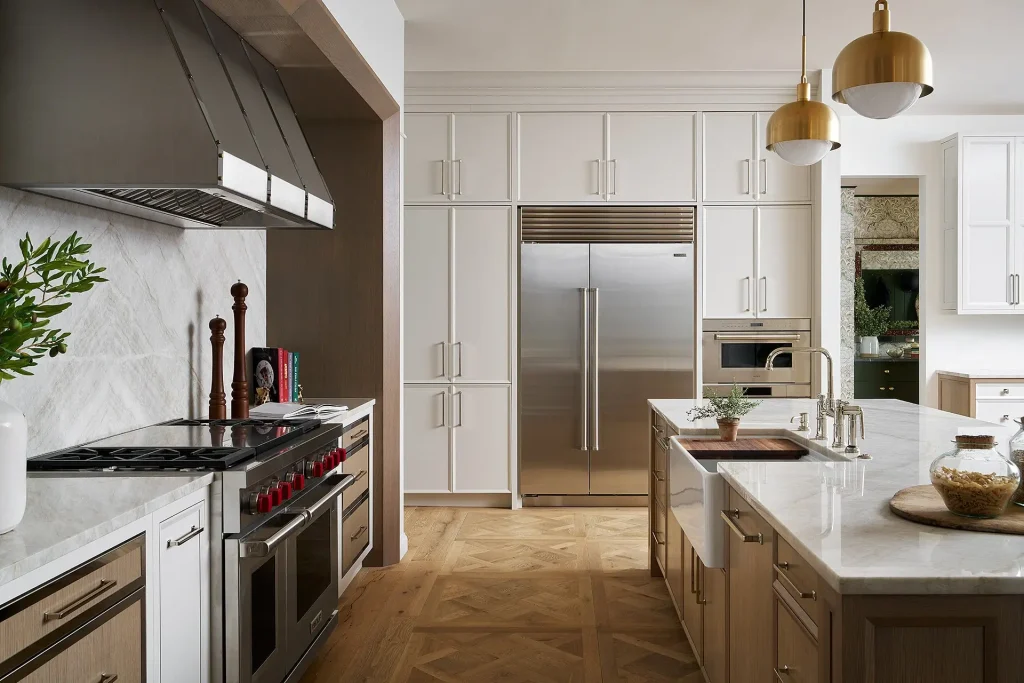
- Modern Kitchens cabinets: Minimalist handles and high-gloss finishes make ceiling cabinets look sleek.
- Traditional Kitchens cabinets: Crown molding and warm wood add a timeless feel.
- Transitional Kitchens cabinets: Blend of shaker cabinets and subtle detailing creates balance.
Cost Considerations
Installing kitchen cabinets to ceiling can be more expensive than standard cabinetry. The cost usually depends on:
- Cabinet Material: Wood, MDF, or laminate.
- Design Style: Custom cabinets cost more than stock cabinets.
- Ceiling Height: Higher ceilings require more material and labor.
On average, extending cabinets to the ceiling adds around $1,000–$3,000 to the overall kitchen renovation budget. However, the added functionality and resale value make it a worthwhile investment.
Smart Storage Solutions
If you decide on this design, it’s important to use the upper sections wisely. Here are practical storage tips:
- Store Seasonal Items: Keep less-used cookware, holiday dishes, or serving platters up top.
- Add Step Stools: Compact stools make reaching high cabinets easier.
- Use Pull-Down Organizers: Specialty hardware helps maximize accessibility.
Pros and Cons of Full-Height Cabinets
Advantages
- No wasted space.
- Looks polished and elegant.
- Increases storage capacity.
- Adds long-term home value.
Disadvantages
- Harder to reach without a stool.
- May increase project costs.
- Can make smaller kitchens feel closed-in if not styled well.
Tips to Make Ceiling Cabinets Work in Small Kitchens
- Use lighter colors like white or soft gray to make the room appear bigger.
- Opt for glass inserts or open shelving above eye level.
- Add under-cabinet lighting to brighten the space.
Eco-Friendly Choices
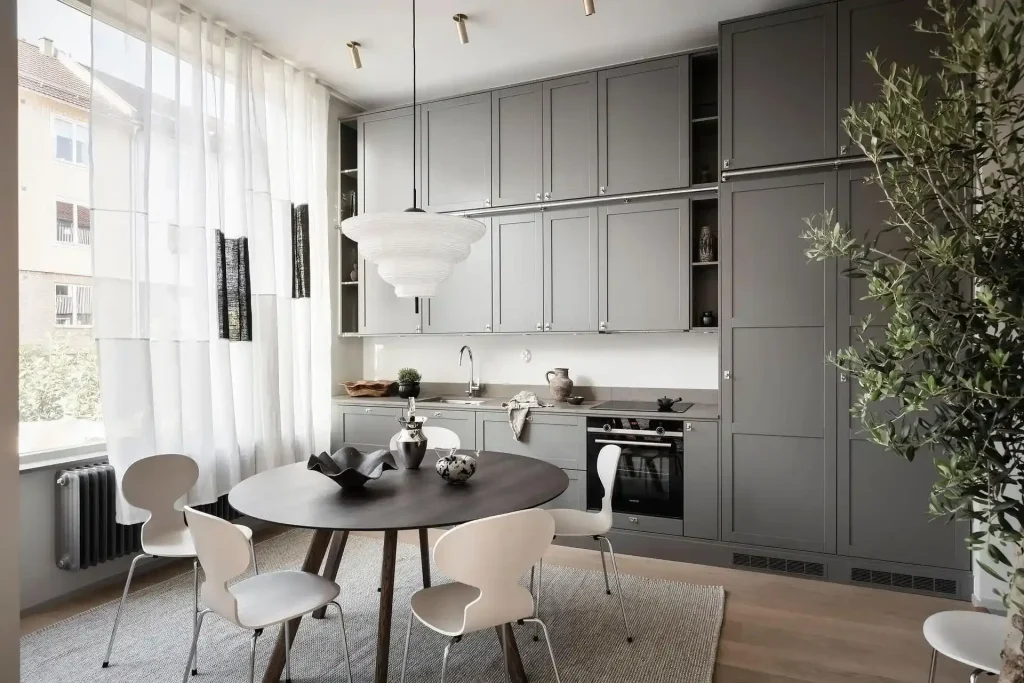
Sustainability is becoming a priority for homeowners. Choosing eco-friendly materials like reclaimed wood or low-VOC paints ensures that your ceiling cabinets are stylish and environmentally responsible.
Conclusion:
Installing kitchen cabinets to ceiling is a smart design choice that adds both style and function to your home. By extending kitchen cabinets to ceiling, you maximize storage and eliminate wasted space, creating a sleek and polished look. Many homeowners now prefer kitchen cabinets to ceiling in modern renovations, as they combine elegance with practicality. Whether your design leans toward contemporary clean lines or traditional charm with crown molding, kitchen cabinets to ceiling can transform any kitchen into a beautiful and functional space.
FAQs About Kitchen Cabinets to Ceiling
Should kitchen cabinets go to the ceiling?
Kitchen cabinets can go to the ceiling, and it often depends on ceiling height and kitchen style. For ceilings 8–9 feet high, going to the ceiling creates a seamless look and provides more storage. For higher ceilings, it may not be practical unless you use stacked cabinets.
How to make kitchen cabinets reach the ceiling?
To make cabinets reach the ceiling, you can:
Install full-height custom cabinets.
Add stacked cabinets on top of standard ones.
Use crown molding or trim to close the gap.
Build a soffit for a clean built-in finish.
What do you call kitchen cabinets that go to the ceiling?
Kitchen cabinets that extend to the top are called ceiling-height cabinets or full-height cabinets. If a second row of smaller units is added above, they are called stacked cabinets.
Should kitchen cabinets go to a 10-foot ceiling?
For a 10-foot ceiling, it’s not practical to have one continuous cabinet run. The best choice is stacked cabinets—a standard row with an additional upper row for display or extra storage. Another option is to stop cabinets below the ceiling and use crown molding for a balanced look.

Viola Moore is a dedicated home improvement blog author who has a passion for writing. She enjoys blogging about all sorts of topics, from interior design to landscaping and more! She loves the outdoors and spending time in nature with her family. She also likes to bake in her free time.

